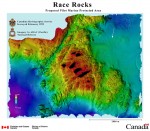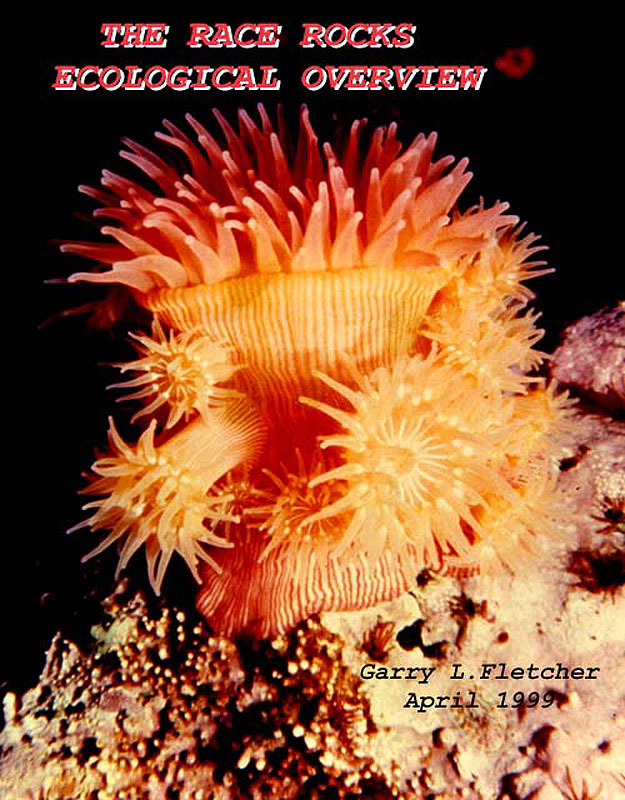RACE ROCKS ADVISORY BOARD MEETING # 2
DRAFT MINUTES
11h00 – 15h30, JANUARY 5, 2000
LESTER B. PEARSON COLLEGE, VICTORIA
Participants: Howard Breen – Georgia Strait Alliance
Regrets:Doug Biffard – BC Parks
Observers:Sean MacConnachie – Fisheries and Oceans Canada
***************************************
INTRODUCTIONS
- The meeting began with a roundtable introduction of the participants.
TERMS OF REFERENCE DISCUSSION (TOR)
- Marc Pakenham read the draft Terms of Reference and indicated that it is a rough draft and still requires the input from the RRAB and TOR sub-committee. Comments from Jenny Sparkes and Gord Hansen have been received. Jenny Sparkes wasn’t clear what the RRAB outcomes were supposed to be from the TOR and has suggestions for each point.
- Angus Matthews suggests that the TOR are quite adequate and don’t need revision. He is keen to move on with rest of process.
- Jenny Sparkes indicated that it is important in this process that people are clear of the game rules from the outset.
- Howard Breen agreed that the TOR is good and need to move forward with this process.
- Roundtable review of the TOR.
- Anita Voss inquired if there was a time frame for the goals set out in the TOR. Marc Pakenham replied that the goal was to have the recommendations completed by March 10. Kelly Francis indicated that the future evolution of the RRAB was not entirely clear.
- Angus Matthews re-iterated the importance of moving forward with this process. Pearson College is currently funding the caretaker and bearing responsibility for the operating costs at Race Rocks. They are unable to raise further funds until this site is designated. He suggested that governments have to understand that private funds are driving this process.
- Howard Breen suggested that in regards to the First Nations paragraph it is important to identify which First Nations are being affected by this process (i.e. T’souke, Esquimalt, Beecher Bay, and Songhees First Nations).
- Tom Sampson indicated that it is important to have First Nations mentioned in this process being that it may be a template for future processes. He suggested that First Nations do not need to be identified directly because the First Nations will know which ones are directly involved.
- Jim Morris would like to see it spelled out in the TOR that Race Rocks is an Ecological Reserve and that the establishment of a MPA will enhance and/ or preserve the current status.
- Angus Matthews believes consensus is where everybody is reasonably content and walks away from the table satisfied. Being that this is a pilot process the consensus “bar” should be set higher than is stated in the draft TOR. Marc Pakenham suggested that recommendations will probably not please everyone 100%, but this process will respect and provide the opportunity to indicate their views.
- Howard Breen suggested that if the RRAB could endorse the recommendations 100% they would be accepted much more broadly throughout the community.
- Keith Symmington asked to have these comments read into the minutes: “CPAWS supports the establishment of a ‘protocol agreement’ between the Province and Fisheries and Oceans Canada, as well as the recognition of the Constitutional and treaty rights of First Nations and their interest in a cooperative management regime, within the Terms of Reference“.
- Marc Pakenham asked the RRAB members to send comments to him by Friday January 7, 2000. He will synthesize the comments and have a conference call on Tuesday Jan 11 with the TOR sub-committee and will have a revision out to RRAB board members by Tuesday afternoon.
ECOSYSTEM OVERVIEW PRESENTATION
- Brian Smiley introduced himself and the purpose of the presentation including:
- The background of ecosystem overview;
- the MS Access database created by the College; and
- Cindy Wright’s contract to synthesize the ecosystem overview into a written report format which outlines major gaps in our current knowledge and provides general recommendations on future research. The report does not address socio-economic information, nor does it provide strategies or actions for implementing research recommendations.
- Cindy Wright described the report and it was based on a similar report prepared for Sable Gully. It is oriented for aquatic issues.
- Outstanding physical features at Race Rocks:
- High velocity currents up to 6 knots. High velocity currents create turbulence which mixes water column, prevents stratification, delivers high nutrients, and high oxygen content to support benthic community;
- High nutrients and rocky substrate attract lots of animals and high larval recruitment;
- Algal biomass: 110ha X 67 metric tonnes/ ha = 7370 metric tonnes of algae/year;
- 130 known species/genera of phytoplankton and 100 zooplankton;
- Over 200 species/genera of invertebrates. High abundance and high diversity including a strong population of threatened abalone;
- Critical habitat for species of rockfish, lingcod, and kelp greenling. Not knowledgeable of fish distribution through lifecycle. About 95 known species of near-shore fish;
- Marine mammals: Haul-out site/ rafting for pinnipeds. Predominantly used by harbour seals for all lifestages. 2nd largest seal haul-out in Canadian waters of Georgia Basin. At times can represent 20% of seal population in area. Reports of up to 1000 seals reported at Race Rocks. Reported as a high use area for transient Orca;
- Birds: 4-5 species use Race Rocks as a nesting site. 23% of pelagic cormorants in eastern Juan de Fuca are at Race Rocks; and
- Traditional Ecological knowledge. Pearson college working with First Nations and fisherman to acquire knowledge.
- Marc Pakenham asked if we could have this presentation to circulate. Brian Smiley indicated that he would make it available, but that it is a high-grade of the draft report. Hopes to keep this document and databases as a living document to be updated in future.
- Howard Breen inquired if the Ecosystem Overview supported an extension of the boundaries of the ecological reserve. Brian Smiley suggested that we now have a baseline to go from; therefore depending on which objective is focused upon will determine the requirements of the boundaries (e.g. If the objective is to protect a nesting area, the boundaries are probably sufficient. If the objective is to protect foraging sights the boundaries may be too small).
- Garry Fletcher suggested that the existing boundary would work very well if everybody abided by it. He expressed concerns that the annual changes of animal’s behaviour may put them outside the boundaries. He indicated that he would hate at this stage for boundary discussions to prevent decisions being made. He suggested that flexibility needs to be maintained as information is acquired.
LUNCH
BOUNDARY DISCUSSION
- Marc Pakenham reviewed the boundary options that have been presented to stakeholders. He described enforcement problems with existing boundaries in regards to depth in meters. Feedback to date supports mostly option 2, the angularized boundaries of the ER. This option does not reduce the size of the ecological reserve, but does make it easier to describe by legal terms and is easier for mariners. The boundaries could possibly use buoys or sight markers. Option 2 is approximately 10% larger than existing ER boundaries. Option three has a 100 metre buffer zone around angularized option 2.
- Howard Breen suggested that the Georgia Strait Alliance generally support the concept of buffer zones. With this particular case it may be feasible to increase seabed protection, but not reduce pelagic fishing opportunities outside existing boundaries.
- Brian Smiley inquired if it was possible to extend the boundary along the bottom to protect the important habitat that some threatened species use during part of the year.
- Sean Moore indicated that the SFAB fully endorses the protection of rockfish within the existing area, but is looking for the continuation of fishing opportunities for transient species (e.g. halibut and salmon) within the existing reserve.
- Angus Matthews reminded the group that the objective for a MPA in general is not only to protect species and habitat but to increase research and public education. Overlaying existing boundaries of MPA with ER would be easier politically. Problems with the option 2 lie on south west corner of ecological reserve where there are two halibut fishing spots. Angus Matthews suggested that the SFAB might agree to a no-take in the existing area if the boundaries did not increase. Other issues to take into consideration include flying tourism. He suggests that a small footprint would be a more effective to designate and further rockfish closures are a separate fisheries issues.
- Jim Morris indicated that this MPA cannot solve all problems today. The management plan could make a recommendation for a future increase in the size of the MPA or possibly a creation of another ER or increase in the size of the ER.
- Tom Sampson indicated that we should be aware that there are existing Supreme Court decisions that grant First Nations absolute rights to the fishery resources as well as treaty rights that supersede any new rules. It is important to recognize that if you only protect / manage the shoreline you’re ignoring the natural spawning process and interaction between the shallow and deepwater. Nature has provided existing patterns that we are ignoring, the pattern or options that we are promoting do not comply to these existing patterns.
- Anton Roberts inquired if this area is going to be an absolute “no-go zone”. Kelly Francis described minimum levels of protection under Pacific MPA strategy and that this process will define the levels of protection for Race Rocks. It is anticipated that Race Rocks MPA marine components will continue to offer public access under some guidelines or regulatory authority.
- Howard Breen indicated that although the Georgia Strait Alliance supports a larger area, they would not block consensus if the RRAB recommends maintaining the existing boundaries with an angularized version. Their larger concern is that the energy and resources that have gone into the pilots will not be carried on to future candidates.
- Marc Pakenham indicated that enforcement is a major issue. He felt that stakeholders would support a relatively small MPAs if they were properly enforced.
- Cindy Wright asked what level of protection the buffer zone would offer. Marc Pakenham responded that the buffer zone would offer a different level of protection.
- Rupert Gale suggested that the angularized areas of option 2 could be the buffer zone.
- Angus Matthews suggested that angularized version isn’t critical for habitat. For managing the area radar would be effective in managing boaters that enter into the area.
- Anita Voss suggested that invertebrates contribute significant amounts of biomass via their larvae into the environment.
- Jim Morris suggested that the important part of this process is to inform the people of what they can and cannot do in the area. Suggests that during the ER consultation consensus was essentially reached, and changes in the area would not be effective.
- Garry Fletcher felt that there were large safety concerns with using anchors and buoys in the area.
- Brian Smiley indicated that any MPA will have to be Gazetted and described legally. Therefore a bathymetric definition of the area would not be an effective method to enforce. He suggests that using a GPS enforceable definition would be a lot more effective in monitoring and compliance.
- Howard Breen suggested that the bathymetry for this area may be the best defined for the whole coast, but as a precedent, it is not an effective system because future MPAs will not be have this level of bathymetric observation.
- Tom Sampson suggests that the MPA could be in place for a certain amount of time and then re-evaluated. He described the process of restoration of Goldstream river and the resolution of the fisheries conflict between First Nations and the commercial fishery. By having everyone agree to stop fishing over four years (one life cycle) 60, 000 salmon returned, up from 4,000. After 8 years (2 cycles) there were over 100, 000 fish returning to spawn. Today a sustainable harvest of 60, 000 Chum adults are taken annually.
- Angus Matthews suggests that the boundaries need to be better defined.
- Jenny Sparkes suggested that these MPAs will not manage the resource but peoples’ activities. In other parts of the world straight lines have been shown to be more effective and easier to understand.
- Sean Moore requires a better-defined map with bathymetric lines and boundaries by Jan 20, 2000 for his presentation to the SFAB.
ACTION ITEM
Marc Pakenham to provide an image of Race Rocks with existing ecological boundaries in relation to navigational bathymetric contour lines.
- Keith Symmington asked to have these comments read into the minutes: “CPAWS believes that a “angularized” or even “rectangular” scenario would be the most logical boundary, for practicality reasons previously discussed at the inaugural meeting.“
MPA / ER MANAGEMENT PLAN DISCUSSION
- Marc Pakenham described the evolution of current Race Rocks ER/MPA management plan draft.
- Marc Pakenham asked the group to review the draft management plan and comment within the next two weeks.
- Cheryl Borris inquired who had prepared this plan. Marc Pakenham responded that he had taken former drafts and modified them to be in line with the format of the Pacific MPA Strategy Discussion Paper.
- Angus Matthews indicated that he has been urging Marc Pakenham and Kelly Francis to get this document out for discussion and review. He indicated that it is not a pre-defined, pre-determined idea from Fisheries and Oceans Canada. The College originally wrote this document for the ecological reserve. He hopes that it ends up as a document that government can use.
- Kelly Francis re-iterated the importance to have input from the RRAB to determine what is missing and to contribute to the management plan.
Marc Pakenham suggested a number of key issues that were missing include: 1) governance—who will manage the ER/MPA. 2) Finances –how do we pay for this? 3) Developing a list of priority issues and strategies.
ACTION ITEM
Marc Pakenham to send this draft electronically to the RRAB members.
- Jim Morris suggested that previous consultation indicated that the water column and management of the fisheries are probably the utmost concern.
- Jenny Sparkes suggests posting the socio-economic and scientific reports on the Internet so that people can access them when they review the management plan.
ACTION ITEM
Garry Fletcher to post reports on the Race Rocks Internet site and distribute address.
- After briefly reviewing the draft ER/MPA Draft Management plan Bill Laing indicated that DND does not have a weapons test site. They have two explosive disposal sites and one training site.
- Angus Matthews indicated that the information regarding First Nations is outdated and needs to be changed.
- Jenny Sparkes suggested changing the name to Interim Management Recommendations from draft management plan. Fisheries and Oceans Canada/BC Parks will be responsible for final management plan.
- Keith Symmington asked to have these comments read into the minutes: “CPAWS believes that the new round of MPA consultations should be with a view to advance the designation of a full no-take MPA at Race Rocks (without prejudice to Constitutional and treaty rights of First Nations). We believe that the closures on groundfish and shellfish in the existing ER are not insufficient in realizing one of the main conservation objectives for the site, namely the restoration of commercial groundfish species, particularly rockfish and lingcod. By allowing salmon and halibut sportfishing to continue (given the documented bycatch of these species in non-targeted scenarios, and the low expectation for survival once caught), this particular (and essential) MPA management goal will not be realized. Judging from consultations initiated to date, and direct feedback from stakeholders, there is considerable support for such a designation.
CONSULTATIONS AND INFORMATION SESSIONS
- Marc Pakenham has given presentations to the following groups:
- December 61999 with Sea to Sea Blue/Green Belt Conservancy, Rural East Sooke Assoc., Society for the Protection of Ayum Creek, Saanich Inlet Protection Society and Land Conservancy Trust
- December 9, 1999 Department of National Defence
- December 13 presentation to the CRD Roundtable on the Environment..
- December 14, 1999 BC Parks, LUCO and Ministry of Fisheries
- December 14, 1999 Sports Fishery Advisory Board ,another to follow soon.
- December 22, 13 moons First Nations’ presentation to the RRAB.
- Marc Pakenham is scheduling presentations with Tourism Victoria, Royal Roads University, University of Victoria, Royal BC Museum, Rotary Club Victoria and District of Metchosin in the next few weeks.
- If RRAB members’ constituents are interested in a presentation please inform Marc Pakenham.
- Kelly Francis hoping to schedule two large public meetings/consultations near the end of January.
- Tom Sampson indicated that he has been talking with local tribes and suggests that they all are interested in the process but don’t want to be involved in if it interferes with Treaty process. They would like to meet separately.
ACTION ITEM
- Marc Pakenham to send information package to Tom Sampson for local area First Nations.
OTHER BUSINESS
- Bill Laing discussed the idea of a tour at DND facilities and will pass out information to Marc Pakenham when he has a determined time.
- Angus Matthews talked about the “racerocks.com” project information session at Telus tomorrow and invited those in attendance if they wished to come.
Next proposed meeting date:
26 January, 2000 – 12h00 to 16h00
at Pearson College (lunch will be provided @ 12h00)



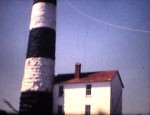

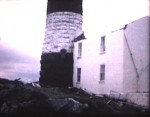
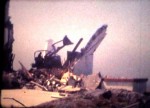
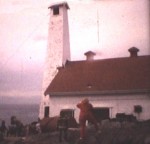
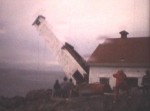
 Link to this site for the Klallum language, and a story by Thomas Charles .
Link to this site for the Klallum language, and a story by Thomas Charles .